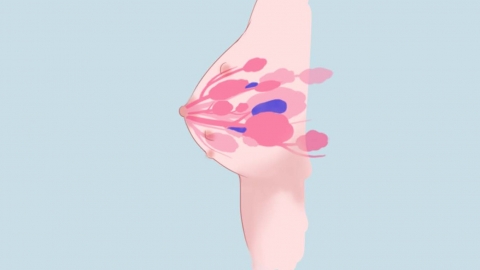Why does the chest become swollen and painful before menstruation?
Generally, "yima" refers to menstruation. Possible causes of breast pain before menstruation include elevated estrogen levels, psychological factors, mastopathy, mastitis, and mammary duct ectasia. It is recommended to seek timely medical advice and follow the guidance of a physician for treatment. A detailed explanation is as follows:

1. Elevated Estrogen Levels
During the menstrual cycle, after ovulation the corpus luteum forms and secretes large amounts of estrogen. Estrogen stimulates the proliferation and dilation of mammary ducts, causing breast tissue congestion and edema, which leads to a feeling of breast distension and pain. No treatment is necessary; prevention can be achieved through a low-salt diet and wearing non-wired supportive undergarments in daily life.
2. Psychological Factors
Prior to menstruation, women may experience mood swings such as anxiety, tension, or depression due to hormonal changes. These negative emotions can affect the regulatory function of the neuroendocrine system, increasing the sensitivity of nerves within the breast tissue, thereby making mild physiological breast changes cause more noticeable pain. It is recommended to learn self-regulation techniques and relax through moderate physical activity.
3. Mastopathy
Mastopathy may be related to imbalances in estrogen and progesterone levels caused by ovarian dysfunction. Incomplete regression of glandular tissue leads to nodular hyperplasia that compresses peripheral nerves, causing breast pain before menstruation. Accompanying symptoms may include breast lumps or granular masses. Patients can take medications such as Rupixiaoxiao tablets, Hongjin Xiaojie capsules, or Xiaoyao pills under a doctor's guidance to alleviate symptoms.
4. Mastitis
Mastitis is often caused by autoimmune factors or infections. Inflammatory stimuli cause breast tissue to become congested and swollen, and hormonal fluctuations before menstruation can intensify the pain. Symptoms may include redness, swelling, and fever in the breast. Patients can take medications such as penicillin V potassium tablets, metronidazole tablets, or cefradine capsules as advised by a physician.
5. Mammary Duct Ectasia
Mammary duct ectasia may be associated with impaired ductal excretion and abnormal hormone levels. The mammary ducts dilate, the duct walls thicken, and surrounding tissues exhibit inflammatory responses. Hormonal changes before menstruation stimulate the affected areas, causing breast pain. Other symptoms may include nipple discharge, subareolar masses, and pain in the areolar region. Patients should follow medical advice to use medications such as amoxicillin capsules, prednisone tablets, or bromocriptine tablets for treatment.
In daily life, it is important to maintain a balanced diet and reduce the intake of high-fat and high-sugar foods; engage in moderate physical activity to enhance physical fitness; and perform regular breast self-examinations to detect problems early.






